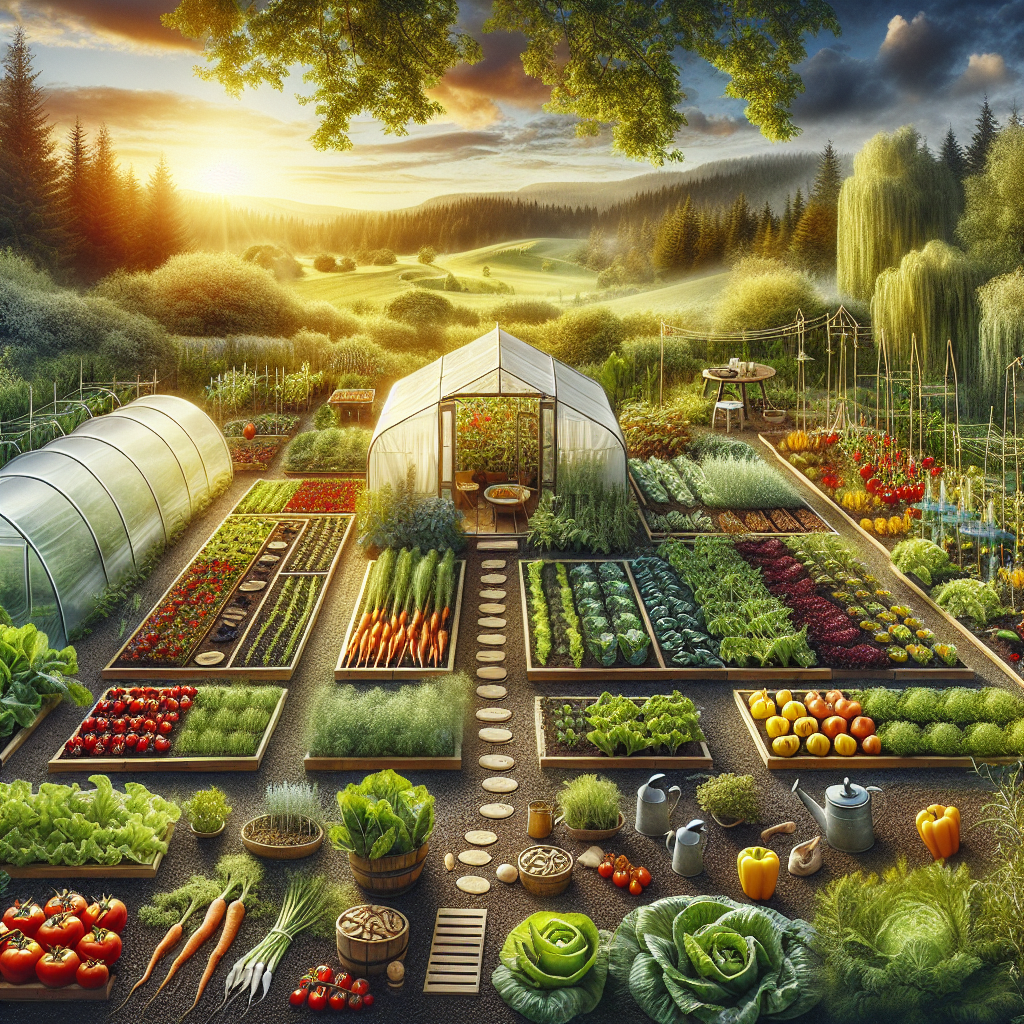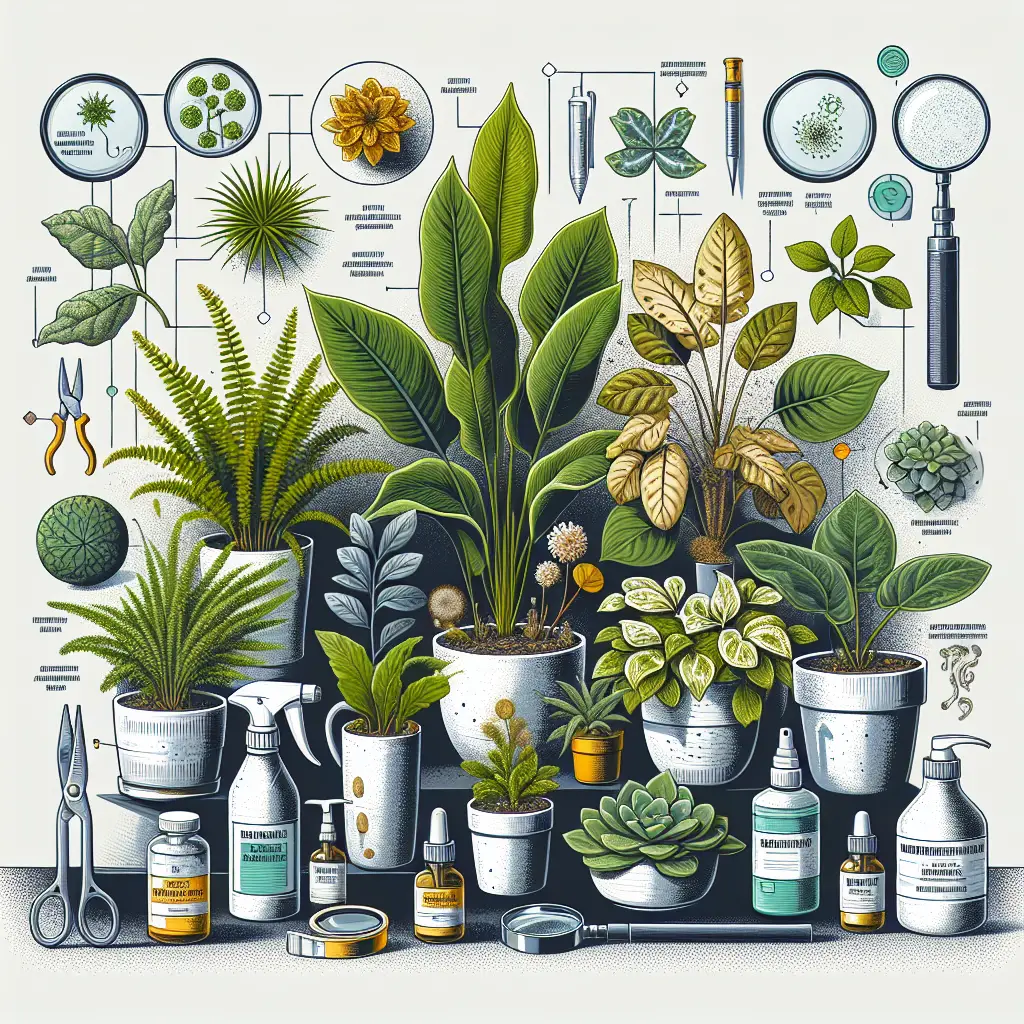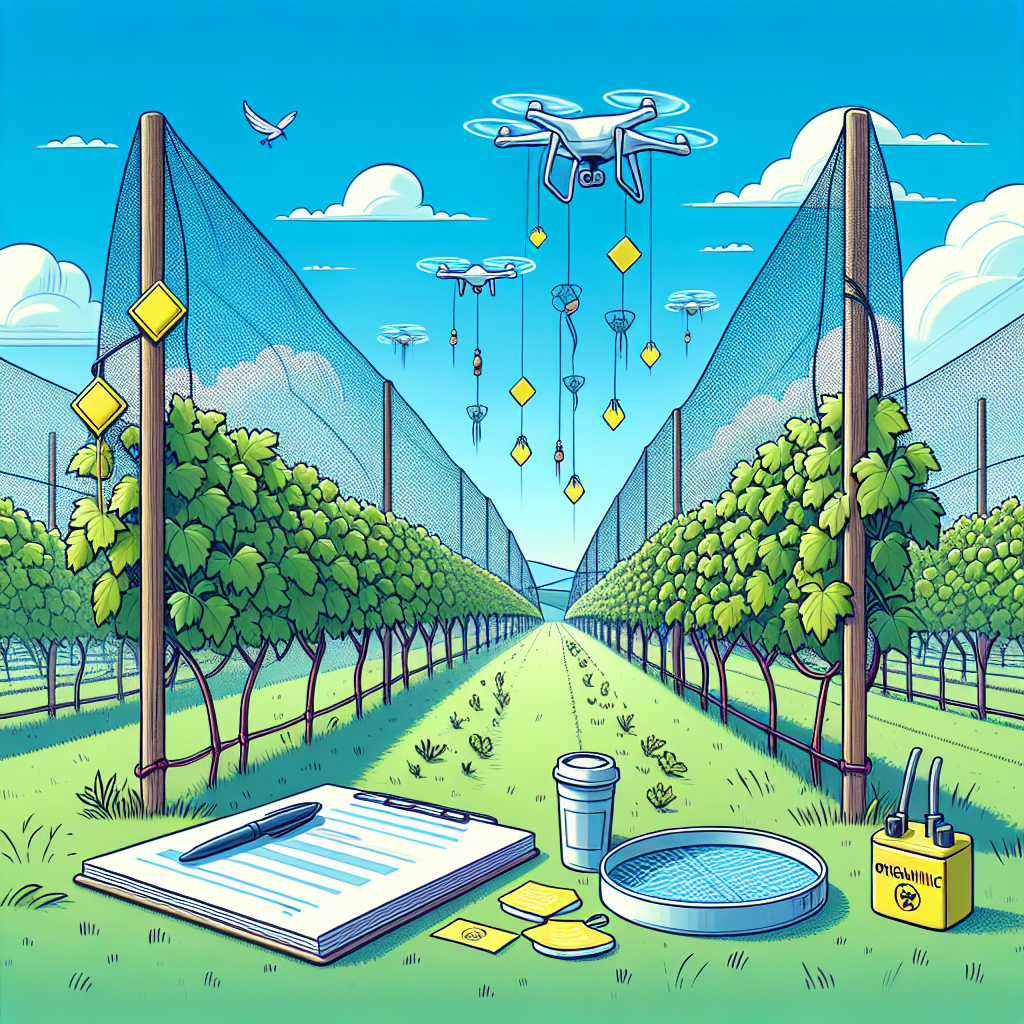Extending Your Harvest: Techniques for Longer Vegetable Growing Seasons
Updated July 3, 2024 at 9:18 am

Overview of Extending Your Vegetable Growing Season
- Pet Friendly: Most vegetable plants are safe for pets, but always check individual plant profiles especially when trying new varieties.
- Light Requirements: Understanding the light requirements for different vegetables can help you plan for season extenders like grow lights.
- Watering: Automated irrigation systems can ease the task of watering, especially during peak summer months or when using protective covers.
- Humidity: Greenhouses and cold frames can help to regulate humidity, protecting your plants from harsh conditions.
- Temperature: Utilizing passive solar energy and thermal masses are techniques to maintain favorable temperatures within season extenders.
- Difficulty: Extending your growing season may come with a learning curve, but most techniques can be implemented by gardeners of all levels with a bit of research and patience.
Understanding Frost Dates for Effective Planning
If you’re keen on getting the most out of your vegetable garden, understanding frost dates is crucial. Most vegetables cannot withstand frost, so knowing when the first and last frosts typically occur in your region is central to planning your planting and harvesting schedule. Tools like the USDA Plant Hardiness Zone Map can be beneficial for this task, helping you determine the specific window of growth in your area. With this knowledge, you can stagger plantings and select the right time to implement season extension techniques.
Using Cold Frames for a Head Start on Spring
One popular method for extending the growing season is the use of cold frames. These are essentially mini-greenhouses that can protect your plants from frost and cold nights. Typically, they are constructed with a transparent top to let in sunlight and a solid, insulated frame to retain heat. Gardeners often use them to start seedlings early in spring or to continue growing hardy plants like spinach and kale well into the colder months.
Take the Exaco BioStar Premium Cold Frame, for instance, which many reviewers praise for its sturdy construction and ease of assembly. Its polycarbonate panels retain heat effectively, creating a warm environment for seedlings to thrive. The adjustable roof vents are also a standout feature, allowing for proper air circulation and temperature control. On the downside, some reviews mention that the lightweight design can be a challenge in windy conditions unless properly anchored.
Pros:
- Durable polycarbonate panels
- Adjustable roof vents for air circulation
- Easy to assemble
Cons:
- May require anchoring in windy areas
Find This and More on Amazon
Maximizing Garden Space with Vertical Gardening
Vertical gardening is another avenue for maximizing your harvest, especially if you’re working with limited space. It involves growing plants upwards using trellises, stakes, or towers. This not only saves space but also can help in reducing the spread of soil-borne diseases and pests. Moreover, vertical gardening can extend the growing season as the air circulation around the plants is typically better, and they can be shielded more easily from harsh environmental elements.
Hybrid Greenhouse-Cold Frame Structures
For gardeners in extremely cold climates, combining the greenhouse and cold frame concepts can lead to robust solutions. Products like the Palram Hybrid Lean Greenhouse combine the insulative benefits of a cold frame with the size and functionality of a greenhouse, allowing for significant extension of the growing season. According to reviews, growers appreciate the dual functionality—using it as a greenhouse during the transitional seasons of spring and fall, and as a cold frame during winter.
However, the reviews point out that it can be somewhat time-consuming to assemble and may require an extra hand, but once set up, it proves to be highly durable and effective. Its clear panels are designed to provide over 90% light transmission, ensuring that plants receive ample sunlight, while the sturdy aluminum frame stands up to wind and weather.
Pros:
- Can function as both a greenhouse and cold frame
- High light transmission for plants
- Sturdy construction
Cons:
- Tedious assembly process
Adapting Planting Strategies for Season Extension
Your planting strategies can greatly influence how long your growing season lasts. Implementing succession planting, where you plant new crops in intervals, ensures a continuous supply of vegetables beyond the typical harvest time. Also, choosing the right varieties of plants that are bred for cold tolerance or quick maturity can make a significant difference. Share with friends that they might want to use the Smart Pot fabric containers as these promote better root aeration, resulting in healthier plants that are more resilient to temperature fluctuations.
Based on user experiences, the Smart Pot is highlighted for its portability and flexibility, allowing gardeners to easily move plants to take advantage of microclimates within their garden or to protect from early frosts. While a few reviews note that these containers might dry out faster than traditional pots, thus requiring more frequent watering, they remark on the overall improvement in plant health and yield.
Pros:
- Promotes root aeration
- Portable and versatile
- Enhances plant growth and yield
Cons:
- May need more frequent watering
Find This and More on Amazon
Implementing Diverse Mulching Techniques
Mulching plays a pivotal role in soil temperature regulation, moisture retention, and weed suppression. By applying a thick layer of organic or inorganic mulch around your plants, you build an insulative barrier against the cold, retain heat during the night, and minimize evaporation during hot days. Organic mulches like straw or shredded leaves will also breakdown over time, enriching the soil with nutrients. Meanwhile, inorganic mulches like plastic sheeting can provide immediate warming effects to the soil, especially helpful when prepping the garden for early spring planting.
Optimizing Water Usage with Drip Irrigation Systems
Efficient watering is key to plant health, and drip irrigation systems can be a game-changer when it comes to extending your growing season. These systems deliver water directly to the base of the plants, minimizing evaporation and ensuring deep water penetration. Kits like the Raindrip Automatic Container and Hanging Baskets Kit come highly recommended. The reviews tout it for being easy to install and adjust, offering precise watering that can reduce overall water usage.
Users also appreciate the option to expand the system by adding additional hoses and emitters as their garden grows. On the downside, some reviewers have noted challenges with the pressure regulator, recommending that you might need to supplement the system with a pressure-reducing valve for optimal performance.
Pros:
- Reduces water usage
- Easy to install and adjustable
- Expandable to fit garden size
Cons:
- Possible need for additional pressure regulation
Find This and More on Amazon
Applying Row Covers to Protect Against Pests and Chills
Another effective technique to lengthen the vegetable growing season is the use of row covers. These are lightweight cloths that can be placed over your crops to provide a few degrees of frost protection and to guard against pests. Some row covers, like the Agribon AG-19 Floating Row Cover, have become favorites among gardeners for their versatility. As per the shared experiences, Agribon’s row covers are praised for their durability and ability to let in a good amount of sunlight while providing excellent frost protection.
While they are light enough to lay directly on plants, many users suggest using hoops to prevent any potential damage to tender seedlings. They do caution that on particularly sunny days, these row covers may need to be pulled back to prevent overheating. Therefore, monitoring the weather and adjusting the covers accordingly is key to successful use.
Pros:
- Durable against the elements
- Allows sunlight to reach plants
- Provides frost protection
Cons:
- Can lead to overheating if not monitored
Understanding Plant Varieties and Their Resilience
Selecting the right plant varieties is fundamental in extending your vegetable garden’s productivity. Different vegetables will have different tolerances to the cold, and choosing those that can endure lower temperatures naturally extends your growing season. For example, root vegetables such as carrots and radishes, and leafy greens like collards and kale, often survive mild frosts with ease. By researching and planting cold-hardy varieties, you’ll set yourself up for extended harvesting periods without needing as many interventions.
Leveraging Grow Lights for Indoor Seed Starting
Starting seeds indoors can jumpstart your growing season, especially for vegetables that thrive in warmer conditions, like tomatoes and peppers. By using grow lights, you can recreate the optimal conditions these plants would receive outdoors. Grow lights are a great tool for those with less than ideal window light or for starting seeds early when the light duration outside is still insufficient. The VIPARSPECTRA LED Grow Light comes highly recommended in the gardening community. Its full spectrum light mimics natural sunlight, promoting plant growth even in the dark days of winter. Reviews point out its energy efficiency and the coolness of the lights, ensuring your seedlings don’t get too hot. Though it can be a significant upfront investment, gardeners often find that the quality of seedlings and the head start on the season make it worth the cost.
Pros:
- Energy-efficient LED technology
- Full spectrum enhances plant growth
- Does not overheat plants
Cons:
- Can be more expensive than other grow lights
Find This and More on Amazon
Exploring Hydroponic Systems for Year-Round Growing
For those looking to take vegetable growing to the next level, hydroponic systems present an innovative solution to extending the growing season indefinitely. These soil-less systems allow for precise control of nutrients and water, leading to faster plant growth in a controlled environment free from many pest and disease issues. A popular choice among indoor gardeners is the AeroGarden Harvest Elite. Users rave about its compact size, making it perfect for kitchen countertops, and the automated lighting and reminder system for added nutrients and water. Though some users mention that the cost of proprietary seed pods can add up, the convenience and high success rate of harvesting veggies indoors make it a worthwhile investment.
Pros:
- Compact and stylish design
- Automated system features for ease of use
- High yield and growth rate
Cons:
- Cost of replacement seed pods can be high
Employing Seasonal Crops for a Natural Extension
A natural approach to extend your growing season is to grow vegetables that are traditionally harvested in the fall or early winter. Vegetables like Brussels sprouts, parsnips, and different winter squashes develop sweeter flavors after a frost and can be left in the garden until needed. This practice not only prolongs your harvesting time but also enhances the taste of your produce.
Creating Microclimates with Raised Beds and Containers
Raised beds and container gardens are valuable assets for manipulating microclimates within your garden space. The soil in raised beds and containers warms up more quickly than ground soil, allowing you to plant earlier in the season. On top of that, you can easily add hoops and cover them with plastic or fabric to create mini-greenhouses that can shield your plants from cold and pests. The Greenes Fence Powder-Coated Metal Raised Garden Bed is a staple for avid gardeners, known for its durability and ease of assembly. The metal material helps to retain warmth, fostering a favorable growing environment. Critics say the beds can require additional insulation on the sides for cooler climates; however, the ease of modification makes it a minor concern.
Pros:
- Sturdy and long-lasting material
- Easy to set up
- Good for creating warm microclimates
Cons:
- May require additional insulation in cold regions
Choosing and Utilizing Season Extenders
Season extenders are tools that can significantly prolong your growing season. Products such as floating row covers, high tunnels, and shade cloths are just a few examples that can make a substantial difference. A high tunnel, also known as a hoop house, is essentially an unheated greenhouse and can offer the best of both worlds by providing a controlled environment for your veggies. You might like to explore the Gardman R687 4-Tier Mini Greenhouse, which is quite popular among urban gardeners for its compact size and the ability to fit on balconies or small patios. Reviews consistently mention that it’s incredibly helpful for extending the season for herbs and leafy greens, even in tight spaces.
Pros:
- Space-efficient design suitable for small areas
- Great for extending the season for small crops
- Easy to assemble
Cons:
- May not withstand extreme weather without proper anchoring
Networking with Local Gardeners and Extension Services
Don’t underestimate the power of community knowledge when it comes to extending your harvesting season. Local gardeners and agricultural extension services have invaluable, location-specific insights. These can range from the best plant varieties for your area to timing your planting schedules perfectly. Participation in local gardening groups or online forums can provide not only practical advice but also encouragement and support as you experiment with extending your growing season.
Embracing Technology for Precision and Control
Technology offers a plethora of tools to aid gardeners in extending their growing seasons. Soil temperature sensors, smart watering systems, and climate-controlled smart greenhouses are a few examples where tech can take the guesswork out of gardening and give you precise control over the growing conditions of your vegetables. While this might represent a more significant initial investment, the increased productivity and ease of managing your garden can be well worth the cost. Moreover, these tech solutions can lead to more sustainable gardening practices by optimizing resource usage.
Final Tips for Season-Long Success
To conclude, extending your vegetable growing season involves a mixture of understanding your local climate, using the right tools, embracing technology, and being willing to adapt and learn. Keeping your garden thriving beyond the standard growing period doesn’t just offer the reward of fresh produce but also the satisfaction of maximizing your gardening potential. Remember, gardening is a journey, and with every season, there’s opportunity to grow—not just your vegetables but also your skills and experience as a gardener. So, whether you’re experimenting with cold frames or diving into the world of hydroponics, approach each technique with curiosity and patience. The bounty of your extended harvest will be a testament to your dedication and love for the craft of gardening.
Shop more on Amazon

